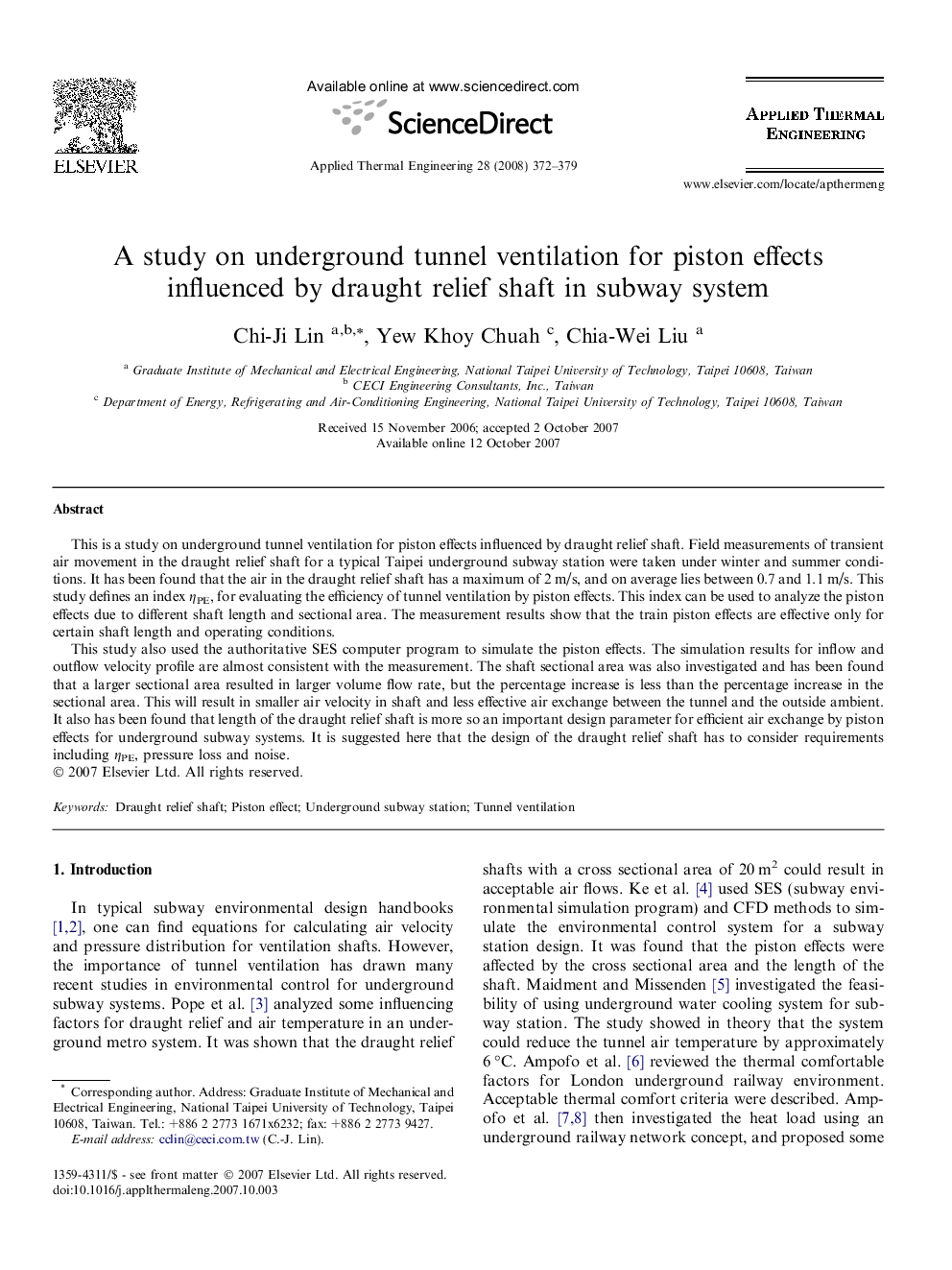| Article ID | Journal | Published Year | Pages | File Type |
|---|---|---|---|---|
| 648892 | Applied Thermal Engineering | 2008 | 8 Pages |
This is a study on underground tunnel ventilation for piston effects influenced by draught relief shaft. Field measurements of transient air movement in the draught relief shaft for a typical Taipei underground subway station were taken under winter and summer conditions. It has been found that the air in the draught relief shaft has a maximum of 2 m/s, and on average lies between 0.7 and 1.1 m/s. This study defines an index ηPE, for evaluating the efficiency of tunnel ventilation by piston effects. This index can be used to analyze the piston effects due to different shaft length and sectional area. The measurement results show that the train piston effects are effective only for certain shaft length and operating conditions.This study also used the authoritative SES computer program to simulate the piston effects. The simulation results for inflow and outflow velocity profile are almost consistent with the measurement. The shaft sectional area was also investigated and has been found that a larger sectional area resulted in larger volume flow rate, but the percentage increase is less than the percentage increase in the sectional area. This will result in smaller air velocity in shaft and less effective air exchange between the tunnel and the outside ambient. It also has been found that length of the draught relief shaft is more so an important design parameter for efficient air exchange by piston effects for underground subway systems. It is suggested here that the design of the draught relief shaft has to consider requirements including ηPE, pressure loss and noise.
